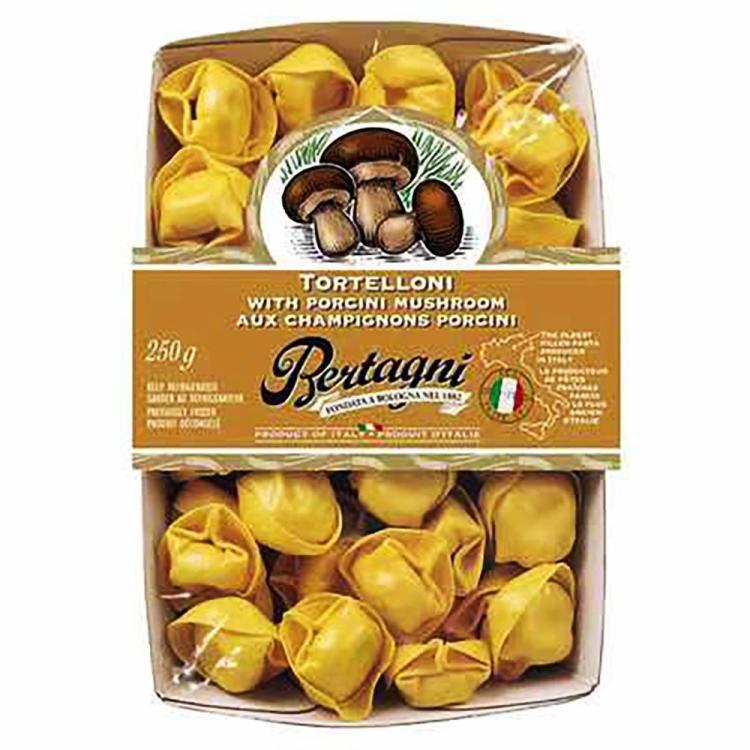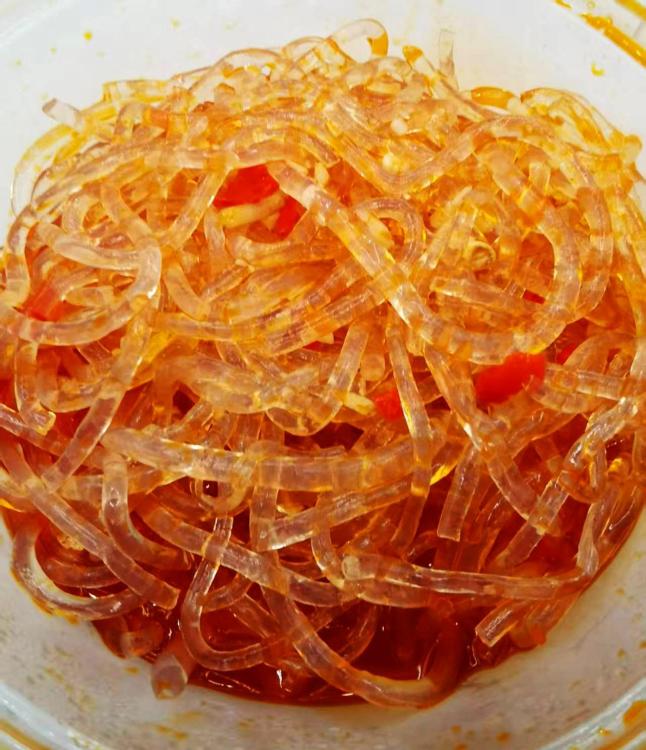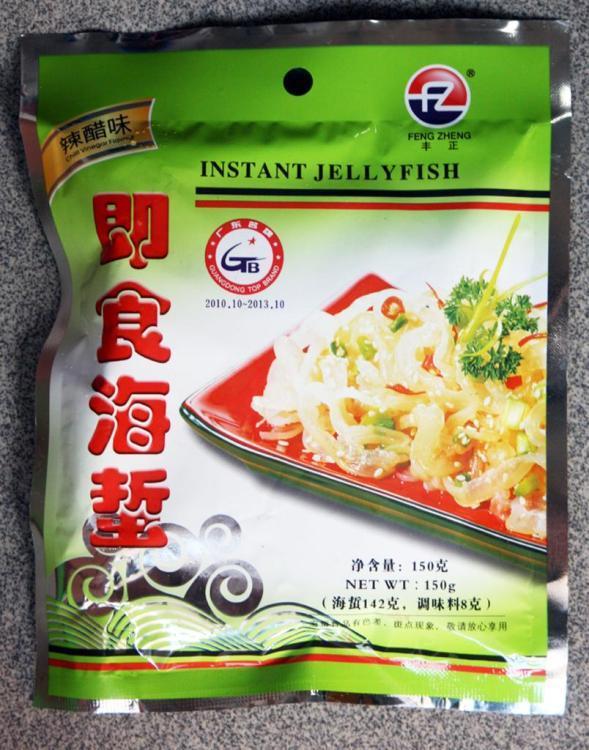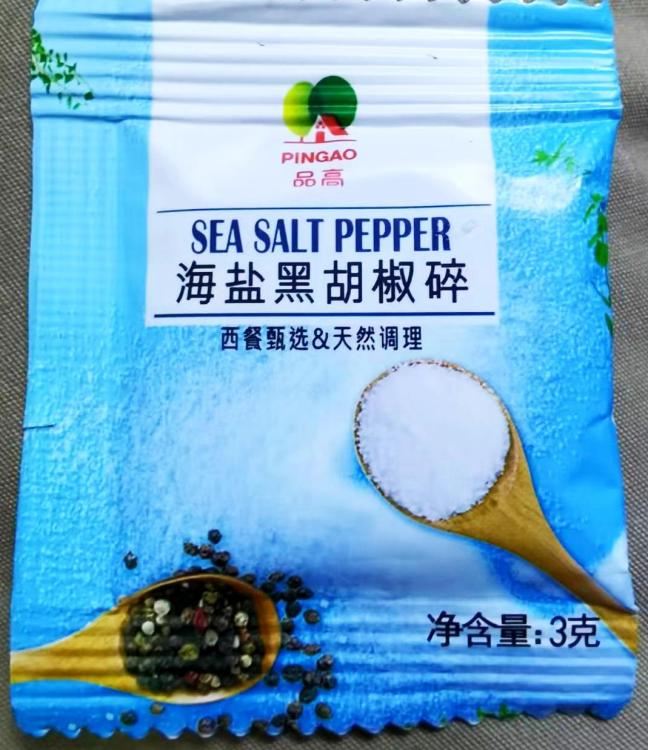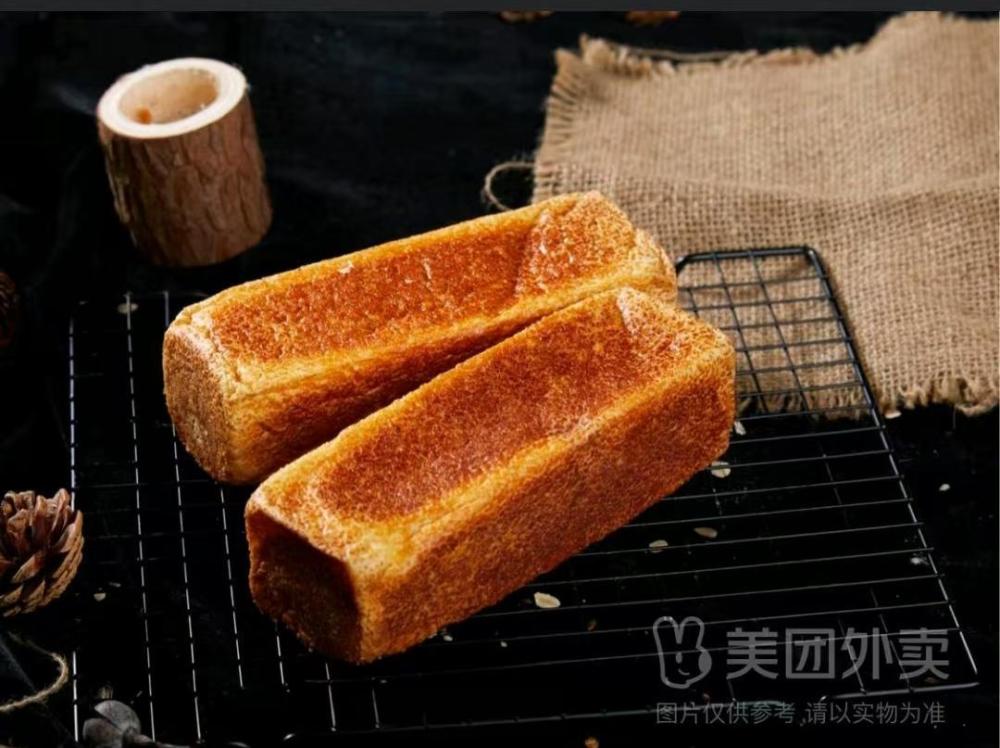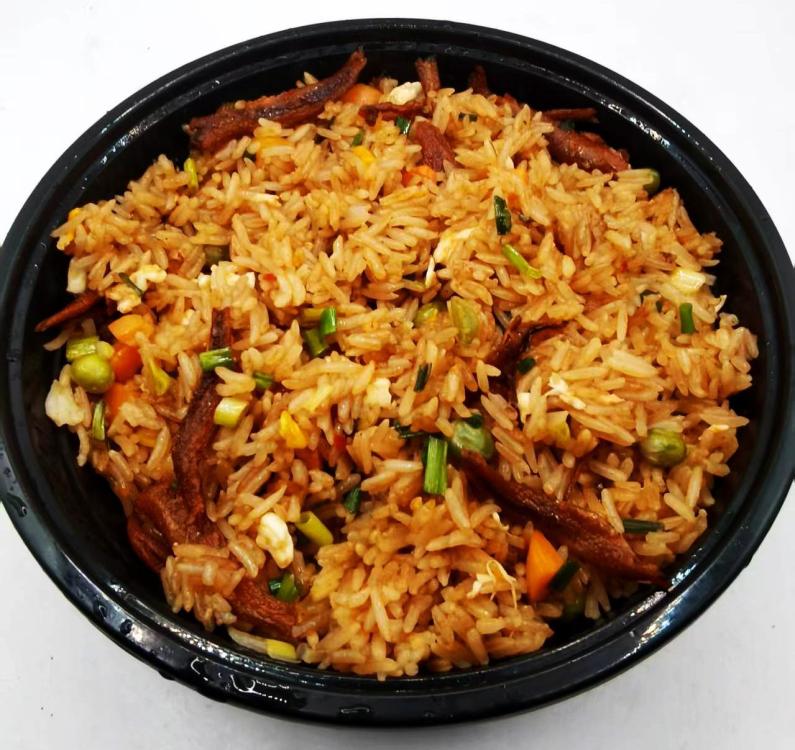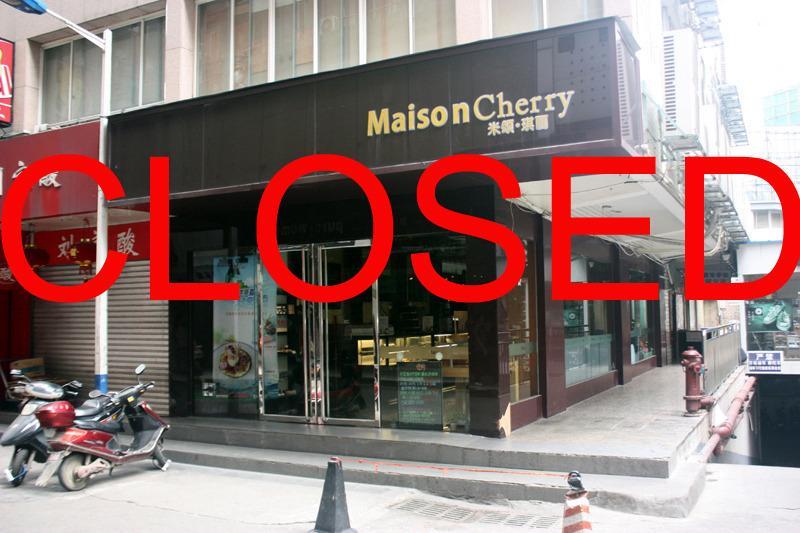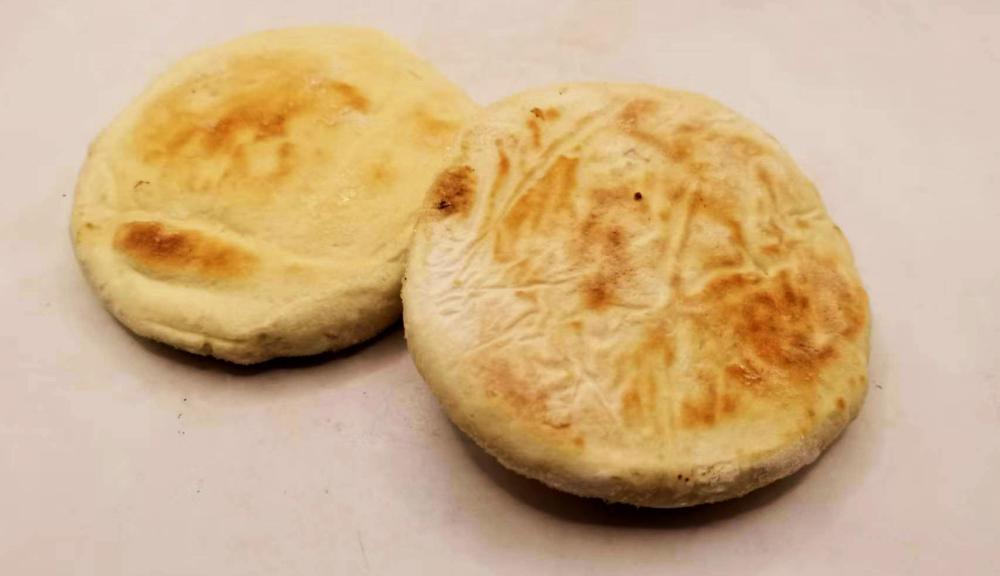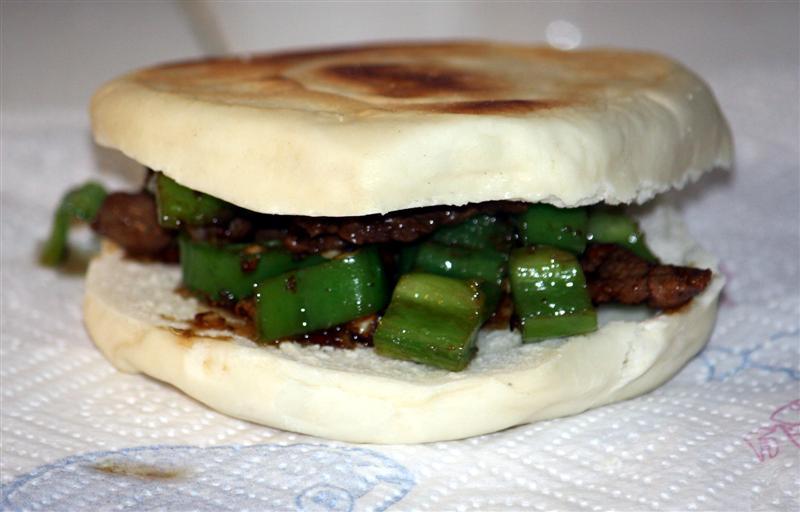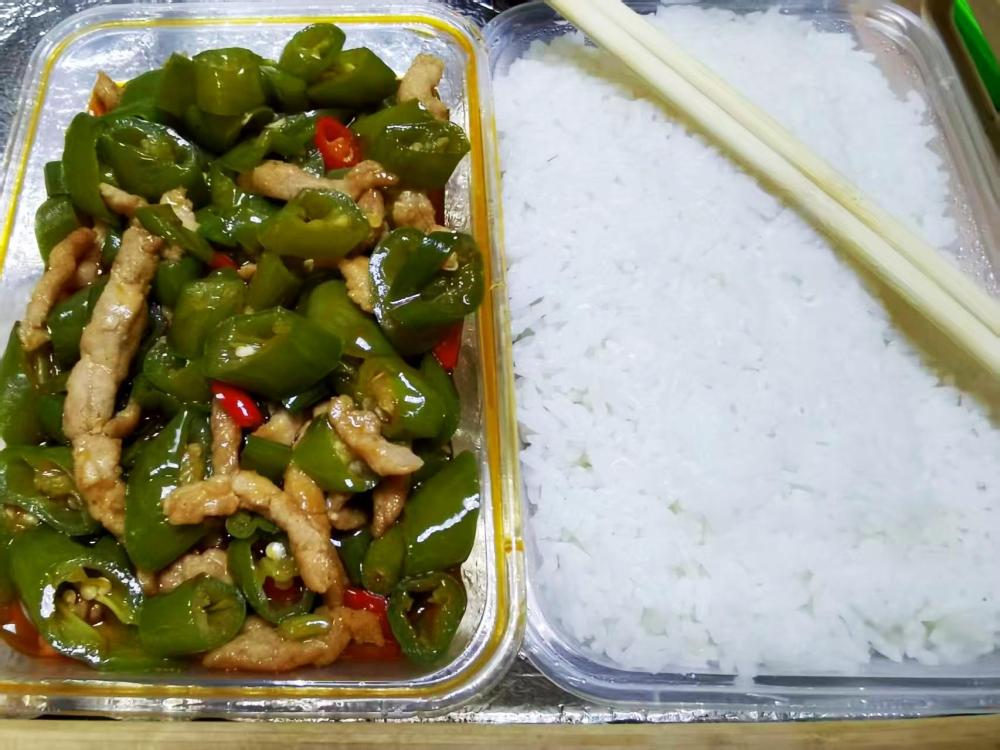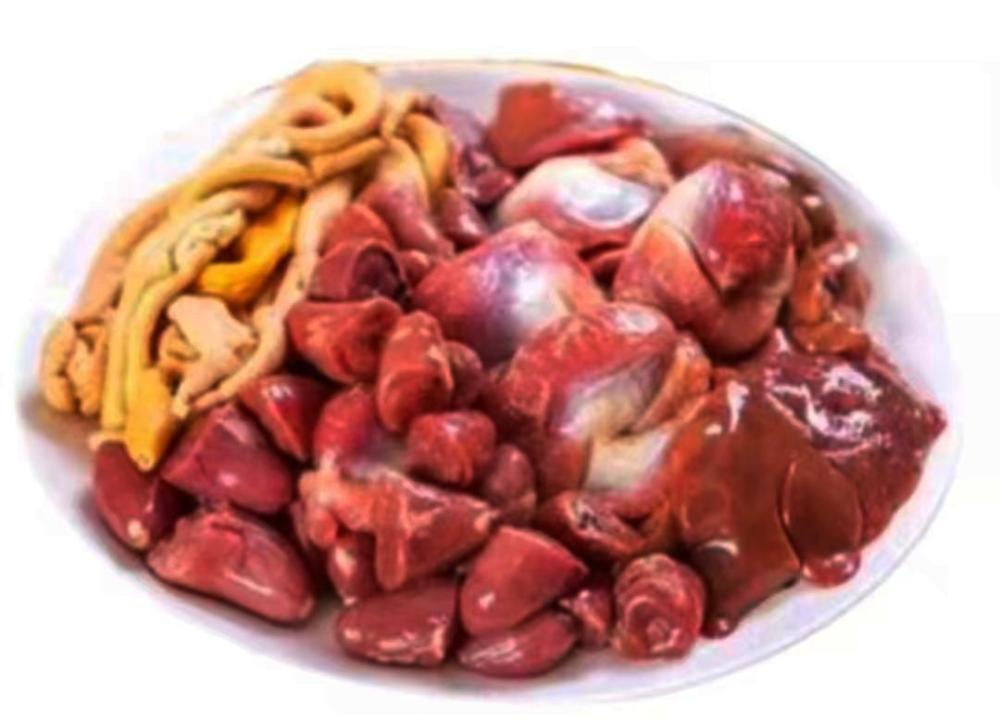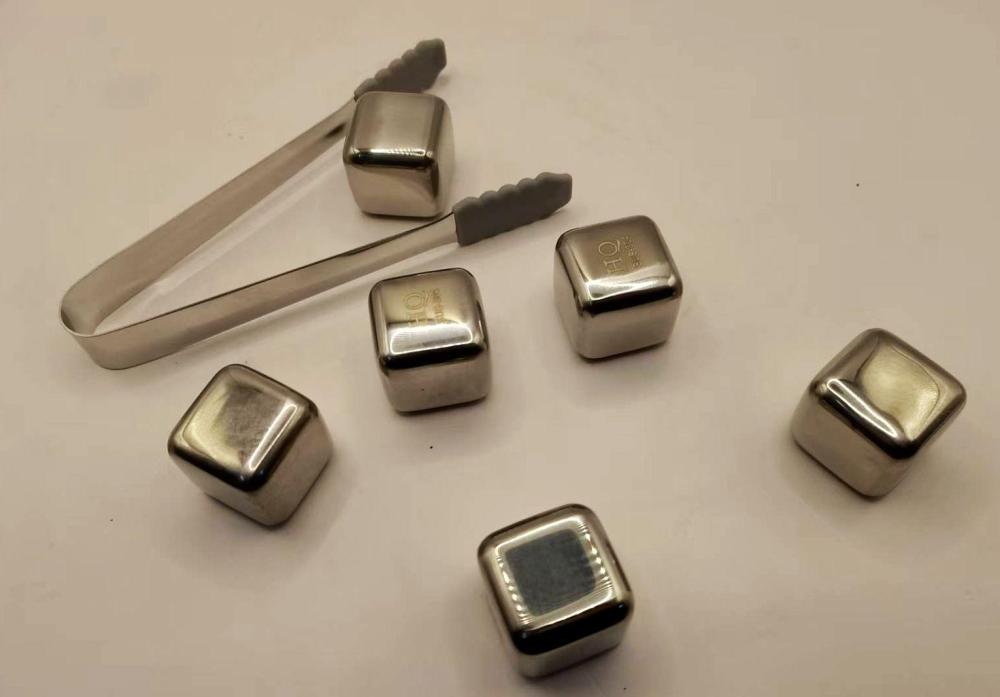-
Posts
16,725 -
Joined
-
Last visited
Content Type
Profiles
Forums
Store
Help Articles
Everything posted by liuzhou
-
Of course, things like this don't help Sino-Italian mutual understanding. This was advertised on the largest on-line shopping service in China. So far so good. Then they describe it as "Italian Chaotic Dumplings". (My literal translation.)
-
Several years ago I was having a dinner with a group of Chinese students and asked what they thought of western food. Few of them had knowingly eaten it. Those who had only knew McD’s and KFC and thought it disgusting. This didn’t surprise me. Most Chinese visit once out of curiosity then never return. Yet these two chains do well here – by catering to children at celebratory birthday parties and by giving ‘gifts’ of toys to children on regular visits. The kids then pester their parents to return, not for the food but for another ‘gift’. The gifts are cheap crap. China’s government has criticised the practice but done nothing about it. And Chinese parents are notorious for never refusing their precious little darlings anything. Western non-chain restaurants in China are 95% execrable and run and cheffed entirely by people who have never eaten western food. The few good ones never last outside of large cities with an ex-pat presence. But back to those students. I asked them what they thought western people eat. Bread, steaks, pizzas and hamburgers were the top answers. I said I rarely eat steaks, seldom hamburgers and told them they’d never eaten real pizzas. Chinese pizza place’s offerings are bizarre and Pizza Hut are no better. Durian pizza, FFS? So I asked them if they eat bread, fish, pork, beef, shrimp, etc., listing the common proteins. Yes, they said (as I knew they would). I then went on and listed common vegetables, then starches, then spices. Yes, yes, yes,… When I told them we eat all the same things, they were astonished. When I said we eat rice and noodles they were dumbfounded. They thought only Asia eats rice and didn’t know that tomatoes and chillies originated in the Americas as did many of the fruits they eat. And these weren’t dumb people, by any means. They were master’s degree or PhD candidates. They didn’t know that potatoes (also from the Americas) are a staple food in much of the world. I explained that if my mother served a meal to my father without potatoes, he would have thought she had lost her marbles, just the same as they would if their mothers served dinner with no rice. This misconception I kind of understood. For a start, China produces more potatoes than any other, with 25% of the market, but most of that goes to animal fodder or some industrial uses, Until very recently potatoes were only regarded as peasant or emergency food for humans. Still, they are only ever used a yet another vegetable in Chinese cuisine; never as a staple. They only real difference between western food and Chinese food is the serving. Nearly all meals are served family style with sharing plates to be sampled bite by bite at random. I’m not trying to put my students down. Most western people know little about food in China. Even chefs!
-
菠萝炒饭 (bō luó chǎo fàn) Pineapple fried rice is not only common in Thailand but among many of China's ethnic minorities, especially the Dai people in Yunnan Province which borders Vietnam and Myanmar/Burma. It also borders Guangxi where I live and the ethnic minorites here also make it. This which I put together last night is 菠萝虾仁炒饭 (bō luó xiā rén chǎo fàn), pineapple shrimp fried rice, to which I also added a little chicken that needed using. Made it slightly spicy, too. So technically 菠萝虾仁鸡肉炒饭 (bō luó xiā rén jī ròu chǎo fàn), pineapple shrimp and chicken fried rice.
-
For many years I have made my beer money by writing and translating for one of China's top wine trade publications. The editor-in-chief is an old friend. This is one such article of mine which appeared bi-lingually in their flagship magazine, several years ago. I have spared you the Chinese version. In Lombardy, Italy, in the town of Desenzano del Garda, on the banks of Lake Garda, Italy’s largest lake, it is a warm spring Sunday morning. The Gallo family are gathering together for lunch. Four generations will be present for the meal. A large table is set out in the garden and the noise of chopping, the banging of pans and the voice of Mama Gallo issuing instructions is emanating from the kitchen. Eventually all the family arrive and take their places around the table, which by now is covered with food. A short prayer of thanks is said and everyone begins to eat. This meal will last for hours. The excited talking and laughing dies down as the Gallo family start to eat, eagerly tasting every mouthful. Mama apologises for the plainness of the food and everyone assures her it is delicious, which it certainly is. After a while, people start to slow down, but continue to nibble and sip at their wine until, finally they begin to feel sleepy. All over Italy, many families are doing the same. Thousands of kilometres away, in a small town in central China, the Li family are gathering together for dinner. Four generations will be present for the meal. A large table is set out in the sitting room and the noise of chopping, the banging of pans and the voice of Mama Li issuing instructions is emanating from the kitchen. Eventually all the family arrive and take their places around the table, which by now is covered with food. A short welcome is said and everyone begins to eat. The excited talking and laughing dies down as the Li family start to eat, eagerly tasting every mouthful. Mama apologises for the plainness of the food and everyone assures her it is delicious, which it certainly is. After a while, people start to slow down, but continue to nibble and sip at their wine until, finally they begin to feel sleepy. All over China, many families are doing the same. Yes, despite the distance between the two countries, the descriptions of these meals are almost the same. Like no other European country, Italy holds food dear to its heart. They live to eat, not eat to live. Food and eating together is central to the culture. To not offer guests at least a snack or, better still, invite them to join the family meal is almost unthinkable – just as in China. But the similarities do not end there. Let’s look at what they are eating. On the Gallo family table are several dishes featuring pork such as a spicy pork stew called Lo Stufato Dell'Adriana, On the Li family table there may also be a spicy pork stew such as Chairman Mao’s favourite, 红烧肉 (hóng shāo ròu), Red-Braised Pork. The Gallo family will be enjoying several types of sausages and hams. Italy’s Parma ham is enjoyed all over Europe and the Americas. Chinese sausages are also world famous and Jinhua ham from China’s Zhejiang Province is enjoyed all over China and beyond. Both countries are known for using every part of the pig from the nose to the tail. Parts of the animal which are thrown away or used only to feed pets in some countries are loved by both Italians and the Chinese people. The Gallo family are also enjoying fresh carp which, earlier this morning, was still swimming in Lake Garda, the beautiful lake they can see as they eat. The Li family are enjoying fresh carp from their nearby river. Mama Li bought it, still live, in the market earlier in the day. On both tables is a wide selection of beautiful, freshly picked and carefully cooked vegetables and a wide variety of mushrooms is used in both countries. Of course on the Gallo family’s table, there will be pasta. And the Li family are also eating noodles. Who can imagine Italy without pasta – or China without noodles? Italians like to say that noodles were introduced to China by Marco Polo, while the Chinese people like to say that Marco Polo took them from China to Italy! Actually, neither story is true. There are certainly records of noodles being eaten in China and pasta being in Italy long before Polo was even born. The truth is noodles probably evolved separately in each place. A plate of ravioli lies on the Gallo family table while a plate of jiaozi is on the Li family table. The shapes and flavours are a little different, but they are essentially the same thing. Tortellini look so much like wontons that they are known in Chinese as “Italian Wontons”. And like wontons, they are often served in soup. Due to the pressures of modern life, the large, four hour long dinner which was once a daily event in Italy, is now usually confined to the weekends and holidays. Similarly, the Chinese large dinner is usually only held for special events and festivals. But the busy worker in Rome and the busy worker in Beijing may eat a remarkably similar lunch. In Rome, a quick bowl of tasty pasta al pomodoro (pasta in tomato sauce); in Beijing a quick bowl of tasty zhajiang mian. While China is the world’s top rice growing nation, Italy is top in Europe. Whereas in China rice is mainly grown in the south, in Italy it is the opposite. And while Chinese stir-fried rice is known the world over, Italy is also renowned for its classic rice dish; risotto. Italian food and Chinese food are the top two international cuisines. There are Chinese restaurants in almost every country of the world; just as there are Italian restaurants. Of course, not everything is similar. Ingredients and flavourings are sometimes very different. Italy relies heavily on dairy products such as cheese and cream in its cooking; something many Chinese people cannot accept. And, of course, there are many Chinese foods and tastes which would be unacceptable or unfamiliar to most Italians. Also, the wines and other drinks accompanying the meal will probably be somewhat different. The Gallo family will be drinking a locally produced wine, possibly a very local Bardolino or a Valpolicella from nearby Verona. Papa Gallo and the older men may finish the meal with a drop of Grappa, the strong liquor made from the skins, stems and seeds used in winemaking. The Li family will more probably celebrate with a rice or grain based wine, but red grape wines, both imported and domestically produced, are becoming more fashionable. And Papa Li would probably appreciate a small glass of that Grappa while Papa Gallo toasts him back with a glass of Baijiu! But overall, the Gallo and Li families could change places and be familiar with much of the food they find and perhaps surprised to find that the two cultures aren’t as different as they imagined. Gustoso!好吃!
-
... not read the delivery app more carefully. I attempted to restock on my favourite jellyfish snack which I buy in these 150 gram bags, So, I happily ordered four bags. 30 minutes later I received 600 grams in one pot. They weren't selling it bagged for rehydration! I'll never get through this lot before it goes off.
-
For many years I have made my beer money by writing and translating for one of China's top wine trade publications. The editor-in-chief is an old friend. This is one such article of mine which appeared bi-lingually in their flagship magazine, several years ago. I have spared you the Chinese version. What makes a wine memorable? What makes a wine stick in your memory in a way that you can recall every nuance of its bouquet, colour and taste even decades after you have drunk it? The depth and quality of an expensive fine wine? Perhaps. Or maybe a perfect match with a perfect dish in a perfect meal in a perfect restaurant? Yes, it could be that, too. Or sometimes, it is the company or social circumstances that you find yourself drinking in that remains with you. I suppose one should remember the Champagne at one’s wedding, but in fact, few people do. I can’t even remember what we drank. Although, I’m sure it wasn’t tea. Thinking about this recently, I racked my brains trying to think of examples of wines which remain with me, not necessarily for their great quality. It doesn’t have to be a wine which has had the critics in ecstasies, although those, too, can be memorable, of course. But, perhaps surprisingly, I decided that the wine I remember most vividly is a simple cheap wine which I drank from a plastic cup n the middle of a rather smelly fishing port dock area. I was sitting on an abandoned and broken chair which threatened to collapse at any minute. The food, eaten from a paper plate, certainly didn’t match the wine even remotely and the whiff of rotten fish and gasoline hardly contributed to the experience. But it remains one of my happiest wine drinking memories. About 25 years ago, I went on a family holiday to a tiny resort village on the French Mediterranean, near to Perpignan on the border with Spain. This is Languedoc-Roussillon territory, home to Vin de Pays d'Oc and the world’s largest wine producing area, responsible for more than one third of all France’s wine. No one will pretend that the wine is in the top grades, but it produces some perfectly acceptable everyday drinking wines. So armed with my high factor sunscreen, I settled down to a lazy couple of weeks by the Mediterranean. Parts of my body which hadn’t seen sunlight for years (i.e. most parts) were exposed to the elements and I spent the first few days doing nothing very much at all. But all that lying around doing nothing quickly became boring, so we took to strolling into the nearby village, visiting the market and generally being tourists. We stocked up on beautiful breads, local cheeses and grabbed flagons of what appeared to be the very local vin ordinaire wines. The locals would look at the cheeses we had selected and make their wine recommendations, which we were happy to go along with. They were dirt cheap, but a fine accompaniment to our simple lunch. The afternoons were happily spent sleeping off their effects. We got in a bit of cultural tourism by fitting in a couple of day trips into the mountains and to the beautiful city of Perpignan where we temporarily abandoned France and, bizarrely, had a lovely meal in an Indian restaurant which had been recently opened by someone from London! I’d be astonished if it were still there. We visited the ancient historic walled city of Carcassonne, where we had a more sensible traditional meal of the local specialty, cassoulet, a slow cooked dish of preserved goose, local sausages and beans. This was again washed down with a local wine, but sadly I can’t tell you what it was. I doubt it had a name, as such. It was served from a jar and everyone in the restaurant had the same wine. It was the kind of place which doesn’t do a menu. There is one dish and one wine. And both were delicious. Towards the end of the first week, while wandering near our holiday apartment, we turned left instead of right and found ourselves in a less picturesque area. This was clearly where the locals really worked when not looking out for the tourists. There were car repair places, decorating material shops, carpenters, metalworkers, stone masons, builders etc. And coming from the centre of it was the most wonderful smell. Garlic, wine and herbs and the unmistakeable smell of fresh seafood. It was a little early for lunch and far too late for breakfast, but we forced ourselves into this tiny shack and asked for the menu. When we did, the woman serving us pointed to the wall where it said a) 20 Francs Déjeuner; b) 25 Francs Déjeuner; c) 30 Francs Déjeuner. We were greedy people, so we went for the 30 Francs lunch for two. (The kids were playing on the beach.) Huge shivering plates of seafood arrived. Lobster, crabs, mussels, oysters, clams, prawns and much more. Again, this was served with anonymous local wine which matched the food perfectly. We went back every day for the rest of our holiday. On the last week, we discovered from the woman in the restaurant shack her restaurant would be closed that Friday for Feast of the Assumption, the Catholic Christian festival and that this was to be celebrated in the traditional manner. Further questioning revealed that this consisted of the local fishermen supplying the entire village’s lunch. We were assured that we would be very welcome and she kindly pointed out the location. The empty loading yard on the dock beside the main fish market. So, on the Friday, we rolled up at noon to find the place packed. The fishermen and their families had set up long barbecue grills along one side of the square where they were grilling sardines so fresh they had realised they were dead yet. There were tables piled high with crusty French baguettes, then more tables piled with fresh peaches. Then, barrels and barrels of wine. The locals were picking up paper plates, loading them with smoking hot sardines, grabbing some bread, a plastic cup of wine and finding anywhere they could to sit and enjoy this simplest of lunches. Then they would go back for more. And I did too. The wine was a red Pays d'Oc and probably not the best match for grilled sardines or for peaches. But I sat on my broken chair, looking out over the Mediterranean lying behind the boat sheds, feeling exquisitely happy and very, very full, but ready for just one more cupful. What's your most memorable wine experience?
-

Hotel Food and Drink: Beyond Dining and Room Service
liuzhou replied to a topic in Food Traditions & Culture
Salt or pepper never appears on Chinese tables, at home or in restaurants, irrespective of pandemics. I always carry these little sachets. OK it isn't freshly ground pepper but in an emergency... -

Hotel Food and Drink: Beyond Dining and Room Service
liuzhou replied to a topic in Food Traditions & Culture
I think not. Where I live they might miss out the salt but the chilli? Never. -

Hotel Food and Drink: Beyond Dining and Room Service
liuzhou replied to a topic in Food Traditions & Culture
Here in China, every day I carry sachets of salt in my wallet in case I come across hotels serving what they imagine to be western food. They never season it! I think that is largely because they are more used to reaching for the soy sauce for seasoning. When travelling wider I also carry ground coffee (which I grind myself). -
For many years I have made my beer money by writing and translating for one of China's top wine trade publications. The editor-in-chief is an old friend. This is one such article of mine which appeared bi-lingually in their flagship magazine, several years ago. I have spared you the Chinese version. I would say it still holds true. In 1985, the organisation I was then working for moved offices to the top floor of an office block in London. I turned up on the Monday morning to find all my files scattered around my new office in cardboard boxes. The phones and computers were yet to be connected. Work was all but impossible. On the way in, I had picked up a coffee and a bacon sandwich from one of the many kiosks around the office building. The coffee tasted like mud and I’m sure the bacon had never met a pig. I sat back in my chair to “enjoy” this late breakfast and stared out of the window. All I could see were the rooftops of the buildings to the immediate north. After day-dreaming for a while, I found my nose begin to twitch. A faint hint of cumin drifted through the window. Or perhaps it was star anise. And Sichuan peppercorns, too. The scent was getting stronger. I began to smell roasting pork – the bacon in my sandwich had no smell. Then, I could smell caramelising honey and duck. The roofs looked the same as they did at 9 am, but the air had changed. It was a symphony of scent and I was sitting at my desk drooling. It was then that I realised that the roofs I had been staring at were those of London’s Chinatown and I could smell a hundred Cantonese restaurants preparing for the day. Today, many years later, every time I visit Hong Kong, I am transported back to that morning. The smells are the same. The Chinatown restaurants were not that great and, on the whole, still aren’t, but by noon I was famished! Fortunately, I was being wined and dined at the company’s expense – but not in Chinatown. An very important guest was visiting and I would take part in a lunch meeting in one of London’s better French restaurants – The Boulestin in Covent Garden, which sadly closed in 1999. And there my life changed. My boss considered himself a bit of an oenophile, and as a measure of the client’s importance (or his own pleasure) ordered a couple of bottles of Chateau Talbot 1975. While it is only a 4th cru, it was the first Grand Vin I had drunk. It was a true eye opener. In my ignorance, I had always assumed that anyone who bought wine which cost more than the taxi home was a bit stupid. Now I knew different. I still can’t describe the epiphany I felt. This wasn’t just wine. This was something much, much more important. I can’t remember what I ate, but I remember every sip and savour of those bottles. And so, that day, was born a connection in my mind between fine wine and China – a temporal connection, but not a culinary connection. I was still in the “beer with Chinese; wine with French” school of thought. And to be honest, with very few exceptions, London’s Chinese restaurants are still not noted for the quality of their wine lists. What I didn’t know that fateful day, was that several years and several bottles later I would end up living in China. The move, for work reasons, almost ended my life in wine. In 1996, there was little foreign wine in China. And what wine could be found was, to be kind, very poor. Things have improved enormously. My local supermarket carries wines from across the globe, some of them extremely good. And China is beginning to produce top class wines. But the basic problem still remains. How to combine Chinese food and wine? The internet and the press are full of conflicting advice and often the writers don’t even seem to know what Chinese food is, or how it is served in China. They are talking about American Chinese food, which is something else entirely. Of course, to answer this we have to say “What is Chinese food in China?” which immediately throws up even more problems. Is it the delicate but complex flavours of Cantonese food, or the robust fire of Hunan, or the numbing spice of Sichuan? Perhaps it’s Xinjiang food. Perhaps Beijing duck. Perhaps… Then we have the biggest problem. Serving style. I have been lucky enough to visit European restaurants and sample tasting menus where each course is matched with a different wine, the overall range finely balanced. But then, European food is served serially. One dish after another. We eat the fish, then we eat the meat, then we eat whatever is next. Between each course, the table is cleared and, at formal meals, a new wine served. Each course has its own matched wine. In China, the concept of courses doesn’t really exist. All dishes come together, so that I might have a mouthful of beef followed by a taste of the fish, then a bit of duck, etc. Matching wines to each dish becomes impractical. I can’t have twenty different glasses with twenty different wines in front of me, switching between them with each mouthful, although it might be fun to try. One way round this problem, for many writers in the past, has been to recommend one wine to cover all tastes- usually a dry, fruity white. This can work. Certainly a Bordeaux red is going to overpower the subtleties of Cantonese food, clash with the spiciness of Sichuan or Hunan and give a metallic taste to most vegetable dishes. Riesling or Chenin Blanc are often recommended for Cantonese food and they also sit well with Sichuan. Reds can work with the robust flavours of say, Beijing duck, which is well matched to a burgundy such as Pinot Noir and Bordeaux wines can pair excellently with “red cooked” dishes, provided they are not too spicy. But for a mixed banquet or family style meal, whites are always going to better. There are those who say that a properly cooked Chinese meal incorporates all the flavours and a fine balance is achieved between the salty, the sweet, the spicy and the delicate - and that a European style grape wine interferes with that balance, whereas western cuisine treats the wine more like a sauce integral to the dishes. I don’t quite buy that. For an excellent celebratory breakfast, try champagne and dim sum. In fact, drink champagne with everything – if you can afford to! But it still surprises me that, in China, most imported wines seem to be reds, yet in general whites are much more suitable as dinner wines. So, as a compromise, why not go for a rosé- especially a sparkling rosé? Back, all those years ago, sitting in my office, I didn’t need to worry about all this. A glass of Tsingtao beer was considerably more exotic, and a fine balance to anything the restaurant could serve up. Today, some of London’s Chinese restaurants are becoming more than cheap tourist traps and serious owners are carefully developing wine lists that do go a long way to both giving a great drinking experience and complimenting the vastly improved food they are serving. At the end of the day, there are no rules. Drink what you like and experiment.
-
- 4
-

-

-
These monstrosities may look like white bread for toasting or sandwiches. No such thing! Described by the store as 黄金芝士条 ~ 流心芝士下午茶 (huáng jīn zhī shì tiáo ~ liú xīn zhī shì xià wǔ chá), Golden Cheese Bars ~ Lava Cheese Afternoon Tea Collection. What kind of cheese they use is not divulged but I would bet heavily on it being American ‘cheese’ which isn’t cheese! Of course, I've never bought it to test!
-
I wouldn't worry about your adding oyster mushrooms to beef and broccoli being 'inauthentic'. Beef and broccoli isn't 'authentically' Chinese anyway!
-
-
About 25 years ago, a family owned bakery opened here in town by the name of Maison Cherry. The master baker was a family member who had trained in Paris. I got to know the family quite well, especially the eldest daughter who had studied English, used the English name Cherry and liked to chat when I went in. The bakery made many cakes which didn’t interest me but also made great French bread of several types – pain de campagne, boule de pain, etc and real croissants. The one thing they didn’t do was baguettes. I asked why and was told it was because ‘people here don’t understand them’. They had trialled them but got tired of people coming back next day complaining they had gone stale too quickly. But, for about four years, I lived happily. They reserved me a loaf every couple of days and called me when it was ready. Then, one day, I was passing their bakery shop and it was closed. Permanently. I tried to call the daughter but her phone service had been cancelled. They just disappeared. I’ve never been able to find out what happened. Their store is now a Chinese KFC knock-off. I weep.
-
Very common here. The one labelled stewed doesn't look stewed. It very much looks like quail century egg. These are sold in every mom 'n pop corner store as well as supermarkets. And, yes. Always rubbery. I never buy them. I buy fresh and D,I,M, (Do it Myself)
-
Another bread I used to bake myself but now routinely buy is this pita-like bread from Xi’an, where I lived a long time ago. It is the bread most often used in 肉夹馍 (ròu jiā mó), Rou Jia Mo. Rou Jia Mo The bread is called 白吉饼 (bái jí bǐng). There is a recipe in the first post of the Rou Jia Mo topic linked to above. Unusually, it is not steamed, but dry-fried then baked. Bai Ji Bing
-
Hunan food never skimps on chilli!
-
For complicated reasons, tonight's dinner was a delivery app favourite. 青椒肉丝 (qīng jiāo ròu sī), green chilli pork slivers, a Hunan favourite, but found in homes and restaurants all over China. Served with rice, of course.
-
The only way to get a bird, chicken, duck, or goose, with the giblets is to buy a live one and slaughter it yourself. Many people do. Otherwise, both supermarkets and market vendors remove the precious giblets and sell them separately. This can be in mixed giblet packs like these and include parts I suspect most don’t come with the birds in the west. Intestines? Or, you can buy each type of giblet separately. Hearts, livers, gizzards, intestines, necks, etc. I always have chicken or duck livers and hearts in the freezer but until very recently was unable to find goose liver or hearts that hadn’t been pre-cooked or, in the case of livers, turned into foie gras. I can now buy both online but have to buy a minimum of 2½ kg / 5 pounds at a time. I’m guessing they are mostly sold to the restaurant or foie gras trade. Goose intestines are especially prized.
-
-
If you wanted to be "authentically" Xinjiang, I would suggest using your honey, but as I said, there is zero reason not to use maple syrup.
-
I should say that maple syrup is unknown in Xinjiang or anywhere else in China. It is uber-North American. That's not to say you shouldn't use it should you find a recipe. It is nearly al produced in Canada and the USA and used there, although limited amounts are exported to Europe. I've never had it, ever.
-
No. That's about a different type of cake. Not the ones I showed. Ba Bao (8 Treasures) is a very common term in Chinese, especially in food names - not only cakes and not only those 8 ingredients. Ba bao soup, ba bao congee, ba bao tea, ba bao beef, ba bao rice, ba bao vegetables, ba bao pickles .... The list is endless.
-
I'm sorry, I don't have a recipe. I've never met anyone who who home makes them. They are usually sold by street vendors who descend all over China from Xinjiang every year when the nuts are in season.


